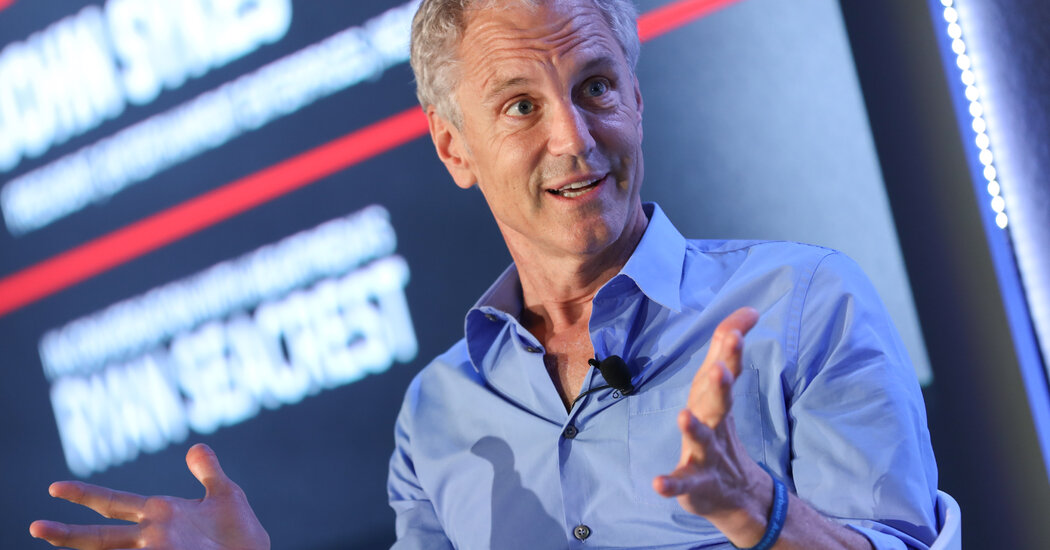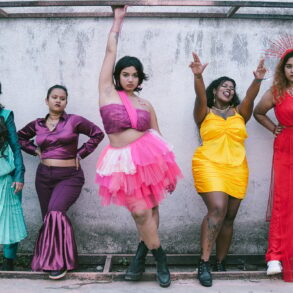
John Sykes, the chairman of the organization behind the hall, talks about the ouster of Jann Wenner, the need to diversify inductees and surprises at this year’s ceremony.
The 38th annual Rock & Roll Hall of Fame induction ceremony will take place at Barclays Center in Brooklyn on Friday, bringing Kate Bush, Willie Nelson, George Michael, Sheryl Crow, Missy Elliott, Rage Against the Machine and the Spinners into pop music’s leading pantheon.
In addition, Chaka Khan, Al Kooper and Bernie Taupin will receive the musical excellence award. DJ Kool Herc and Link Wray will be inducted as influences and Don Cornelius, the “Soul Train” creator and host who died in 2012, will be honored as a nonperformer.
This year’s event comes at a pivotal moment for the Rock Hall, which has been under pressure for years to diversify its ranks, and in particular to admit more women. While the hall is already home to pop heroines like Aretha Franklin, Madonna, Joan Jett and Whitney Houston, overall women are woefully underrepresented, making up fewer than 100 of the nearly 1,000 inductees since 1986.
The institution’s public image problems were compounded recently when Jann Wenner, the Rolling Stone magazine co-founder who helped start the Rock Hall, spoke to The New York Times about “The Masters,” his book of interviews with stars like Mick Jagger, Bruce Springsteen and John Lennon — all of them white men. Justifying the absence of women and people of color, he said that none were “as articulate enough on this intellectual level” and did not qualify as “philosophers of rock.”
The response was harsh and immediate, including from the Rock Hall itself: The day after Wenner’s interview was published, the board of the hall’s governing foundation voted to eject him immediately.
But the effort to remake the Rock Hall has been underway for several years now, and many give credit to John Sykes, a longtime media executive who took over from Wenner as chairman of the Rock & Roll Hall of Fame Foundation in 2020. He has pushed the hall to diversify its makeup, particularly on its nominating committee, which largely operates outside of the public eye. This year the hall even opened up its definition of rock ’n’ roll, calling it “a spirit that is inclusive and ever-changing.”
Still, change is taking time at an institution that has spent the better part of four decades heavily favoring male artists over females.
Four years ago, Evelyn McDonnell, a music critic and journalism professor at Loyola Marymount University, published an essay that included detailed numbers about the hall’s ranks. According to her research, just 7.7 percent of individuals who had been inducted to that point were women.
McDonnell has updated her numbers for 2023. Despite a sharp increase in the number of female inductees in recent years — among them Dolly Parton, Tina Turner, Carly Simon and the Go-Go’s — she found that only 8.8 percent of people in the hall are women.
“They’ve dug themselves into such a hole,” McDonnell said in an interview, “that you really have to do something structural and significant to turn the ship around.”
The Rock Hall prefers to count each act as one inductee, no matter how many members it has; using that methodology, the hall says that 15 percent of inductees are, or include, women.
In an interview last week, Sykes addressed the hall’s progress so far, as well as its need for further change. He also spoke about plans for this year’s ceremony, including a surprise appearance by Olivia Rodrigo.
Here are edited excerpts from the conversation.
When you became chairman of the foundation, what was your mission or goal? Did you see it as an institution in need of change?
I saw it as an institution that, like the music, had to continue to evolve. Rock ’n’ roll music, since its inception in the ’50s, has constantly evolved to different sounds, different styles. But one thing it’s had in common is attitude and spirit. My top priority coming in was to remind the music community that rock ’n’ roll was not rock. It was not one sound. It was an amalgam of rhythm and blues, country and gospel created in the ’50s. And it kept evolving.
Number two, I needed to reset the board and the nominating committee to reflect those artists that we’re honoring. So we added nine new board members, four women, four African Americans. What I’m trying to do now is to update the general voting body that actually decides who gets in the Hall of Fame, to reflect the artists that are eligible. I want to make sure the voting body is young and diverse enough to really make the most educated decisions about who should be inducted.
The biggest complaint has been about a relative lack of women inductees. How have you addressed that specifically?
What I’ve tried to do with the nominating committee is shine a light on the fact that these women and people of color have been underrecognized and need to be nominated and then inducted. So if you look at the last three years, we’ve inducted the Go-Go’s, Tina Turner, Carole King, Dolly Parton, Carly Simon, Pat Benatar. Sylvia Robinson, who started the first hip-hop label. Elizabeth Cotten, great blues player. Kate Bush, Sheryl Crow, Missy Elliott, Chaka Khan.
We have to do better, but we’re making progress.
How do you actually make that change? How can you increase the representation of women without putting a thumb on the scale of what’s supposed to be a deliberative process?
It starts with the people you put on the nominating committee. We have six more members now on the committee, and we’ve been focusing on putting more women and people of color on the committee, because that’s how it starts.
Number two, we just remind them to understand the genesis of rock ’n’ roll. It doesn’t hurt to basically refresh people every year as to where this came from, and the fact that all of these sounds are to be honored.
Why was it important for the board to take action against Jann Wenner so quickly?
This had nothing to do with Jann Wenner as a person or anything about his history. It would have happened to anyone on that board who said those things. That’s what I made clear to the entire boardroom when we discussed this. Because those things go against the heart and soul of what the Rock & Roll Hall of Fame is all about. Rock ’n’ roll doesn’t know color. It doesn’t know gender. And for us to have one of our board members say that, we felt that we couldn’t do our jobs continuing with someone like that as part of our community.
When you talk about the evolution of the Rock Hall and how it includes other genres, it raises the question of boundaries. Like, what isn’t it?
Rock ’n’ roll is what’s moving youth culture, what a 16-year-old is obsessed with. The only other qualification I would put on it is which of those artists inspired those that followed. In the ceremonies you’ll see Harry Styles, Pink, Olivia Rodrigo, Dave Matthews, Ed Sheeran come up and play. I call those Future Hall of Famers. They’re there because they’re so inspired by those artists that are getting inducted.
Olivia Rodrigo is coming in this year. Last year she got up and sang “You’re So Vain” by Carly Simon. She’s going to play with Sheryl Crow this year. It’s this mutual admiration that connects the past with the present.
What is your night like at the ceremony? When there’s a question of whether such-and-such will perform, or if there’s one member the others are feuding with, are you the negotiator backstage?
I’m one of the negotiators. We have a great team that works on the show, along with Joel Peresman, the president. And if there’s an issue we’ll go to the artists. But at the end of the day, we’re all fans.
The drama can be good, right?
Rock ’n’ roll is not always nice. So if the members of Blondie all don’t want to stand on the stage together, well, sometimes you’ll hear it come out. We don’t edit anything. They’re free to do whatever they want. And yeah, if there is a little bit of animosity or rebellion, you know, that’s rock ’n’ roll.
This post was originally published on this site be sure to check out more of their content.






